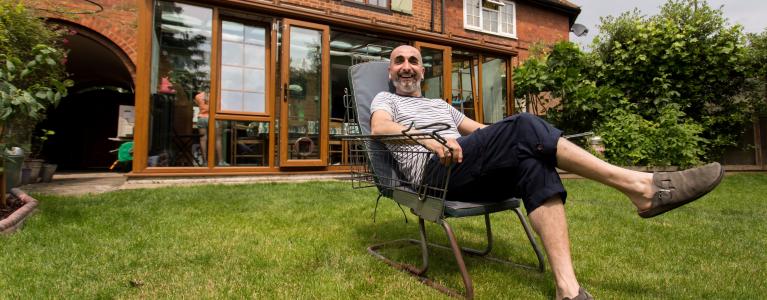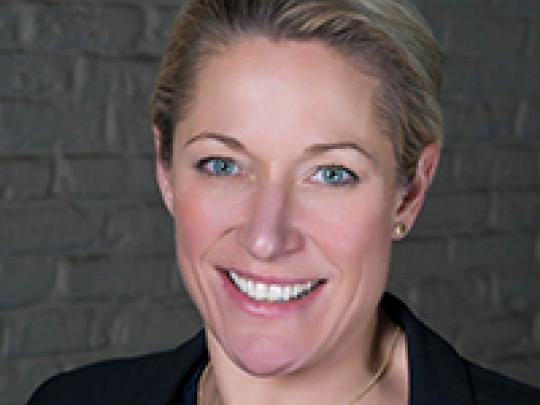
Julie Hirigoyen, commissioner on the London Sustainable Development Commission, and Chief Executive of the UK Green Building Council, talks about World Green Building Week and highlights the importance of greening our homes.
It’s finally here! The biggest awareness-raising week in the green building calendar is upon us.
This year, World Green Building Week is focussing on homes. The WorldGBC has devised the #HomeGreenHome campaign, which aims to raise awareness of the sustainable measures and practices that can make a difference in homes and empower us all to deliver greener buildings.
The way homes are designed, built and lived in have huge implications for London’s sustainability – and Londoners’ quality of life.
For example, as pointed out in the Mayor of London’s Environment Strategy, London’s 3.5 million homes are responsible for around one third of the capital’s total greenhouse gas emissions. Nearly 70 per cent of the energy used in London’s homes is for heating and hot water, and most of this demand is met using gas-fired boilers. Gas-fired boilers are a key source of nitrogen oxide emissions in London, which contributes to poor air quality, and CO2 emissions that contribute to climate change.
As the London Sustainable Development Commission highlighted in its latest Quality of Life Indicators Report, initiatives to decarbonise London’s homes can improve Londoners’ quality of life by reducing fuel poverty (such as through more energy efficient homes) and improving air quality. This is why initiatives such as the Mayor’s Warmer Homes scheme are important, as they help Londoners to replace their boiler with a more efficient model, or get it repaired, so they can heat their homes more affordably and efficiently.
It’s also crucial that we don’t keep adding to the number of homes requiring retrofit by building new homes to net zero standards as soon as possible. In London, our population is projected to increase by 70,000 every year, reaching 10.8 million in 2041. This means that just to meet demand, at least 66,000 new homes need to be built – along with space for tens of thousands of new jobs – every single year. If London is to achieve its objective of becoming a zero-carbon city by 2050, new development needs to be net zero carbon.
The Mayor’s draft new London Plan requires major developments in the capital to achieve net zero carbon, from construction and operation, by increasing energy efficiency, making use of smart technologies, utilising low carbon energy sources, and if necessary contributing to carbon reductions off-site. An on-site carbon reduction of at least 35 per cent beyond current Building Regulations is required.
In the LSDC's response to the draft New London Plan, we emphasised the need to ensure that the push for delivery of higher housing numbers is not at the expense of sustainability standards. Furthermore, we pointed out that design quality, including sustainable design standards should be considered over the long term beyond completion to ensure that buildings perform as intended at design stage. We also highlighted the importance of ensuring that embodied carbon – that is carbon emissions associated with the manufacture and transportation of building materials – should be addressed through whole life costing of carbon in new homes.
World Green Building Week 2018 puts a spotlight on how we all have a part to play to make homes greener, healthier and more energy efficient. This applies from design, through to construction and occupation. London has already made some bold commitments – including most recently signing up to the Net Zero Carbon Buildings Declaration – which will require all buildings within the GLA’s direct control to operate at net zero carbon by 2030. But by 2050 at the latest, London will need all buildings to be operating at net zero carbon, including homes - and this will need action from all of us.
That’s one of the reasons why the UKGBC – the organisation for which I am Chief Executive and whose mission is to improve the sustainability of the built environment – is running its Green Home Heroes campaign designed to highlight action being taken across the UK by individual home owners. UKGBC has teamed up with SuperHomes to profile some of the inspiring individuals that make up the SuperHomes network – real people with a passion for sustainability who have turned their homes into glowing green exemplars.
The picture accompanying this blog is of Jürgen, one the first Green Home Heroes. Jürgen lives in a carbon neutral home in London, saving money through solar panels and energy efficient windows.
Be sure to follow @UKGBC on Twitter, to keep up with the campaign throughout the week! You can also find out more about World Green Building Week events hosted by UKGBC and its members here. Or, check out WorldGBC’s activity map to see events happening across the globe.
About the author

Julie Hirigoyen is Chief Executive of the UK Green Building Council. Julie recently led the process of developing UKGBC’s ‘Ambitions for 2027’, whose aim is for sustainable development to become second nature to all built environment professionals. Julie was previously UK Head of Sustainability and an International Director at JLL, where she oversaw the development of cutting-edge sustainability services to property investors and occupiers across the UK and EMEA. Julie sits on the Green Construction Board, the Igloo Sustainable Investment Advisory Committee and the Carbon Trust Advisory Panel. Julie previously chaired the British Property Federation’s Sustainability Committee.